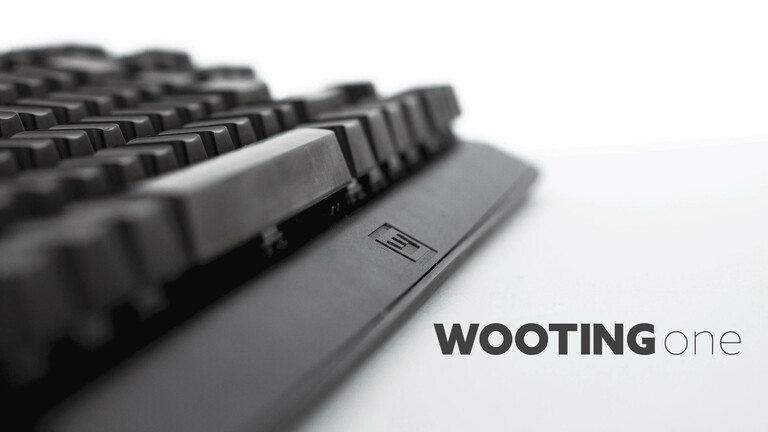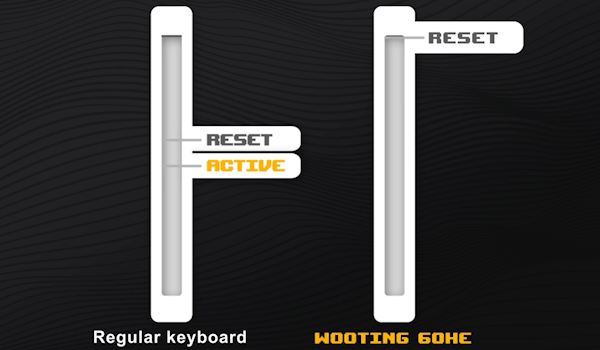Introduction
In the 1990s and 2000s, the keyboard was considered one of the most neglected peripherals among gamers: those who played games competitively at that time carefully chose the mouse and mousepad they used to go into battle, and they also bought a headset that suited their needs, but for the keyboard the except for Quakers, almost no one paid attention (there, however, they tried to aim for at least 4-5 KRO due to the mechanics of the game). The reason for this was that the range at the time was quite limited, and there were mainly color differences between the individual models, and the multimedia buttons, which were fashionable at the time, could not really be used while playing.
However, this changed very quickly, because in 2008 the Cherry MX Red switch with linear characteristics appeared, which not only brought it back to the public, but also made mechanical keyboards popular for the masses. Founded in 1953, Cherry has been making MX series switches since 1984; mainly at that time anyway buckling spring, Topre and keyboards with mechanical switches dominated the market, which were relatively popular despite their expensive prices, but at that time the computer was still not a mass product. The situation changed in the 1990s, as the number of machine owners began to grow exponentially, which led to the fact that rubber-domed solutions took over the market in the name of cost reduction, and they became dozens of throwaway tools from eternal, indestructible objects.
To this day, it is not completely known what finally brought about the success of mechanical constructions after the turn of the millennium; the SteelSeries 7G and gamers probably had a hand in it, but it was refreshing in itself to finally see something happen. It seemed like a novelty that the mentioned MX Reds required a low initial effort of 45 gF (while the impact was registered at 2 mm of the 4 mm key travel), but for fans it was more about the repairability, the modability, and last but not least the sound experience was attractive. For the hard-line supporters of the topic, we must of course note that making the MX switches really correct requires a little post-work, as the squealing and scratching of untreated switches becomes music after a spring change, a thorough break-in (recommended at least half a million actuations), and after lubrication to taste, and the feeling of impact is nicely smoothed out – regardless, even at the factory, they are refreshing compared to membrane/standard rubber dome solutions.
Today’s version of Cherry MX1A/MX2A Red mechanical switches with nylon case and polycarbonate top (RGB) (source: Cherry) (+)
Mechanical keyboards have been in their heyday ever since, there is practically no peripheral manufacturer that does not offer something, and users can choose the linear, tactile, or clicking mechanical switches that suit them, or their toned down variants, in addition to the design and format. However, no major innovation took place for practically 10 years, and although optical switches appeared, which guaranteed an even longer lifespan, they did not significantly affect the user experience. On the other hand, the supply has been constantly increasing, the prices have also decreased, and during the Covid epidemic, many people have found an exciting new hobby in the world of more demanding keyboards, which had a direct consequence of the percolation of the keyboards, which until then had been quite a layered product, to a wider range of ordinary users.
Before the pandemic, back in 2015, three Dutch players created the Wooting company called Wooting One, who were primarily motivated by the stereotypes plaguing their subculture and communications from gaming peripheral companies to create the Wooting One, an analog mechanical keyboard, for which they collected 135,786 euros on Kickstarter. And in 2022, their 60HE model started its conquering journey, which since then can be said to be one of the most popular types among professional players.

Wooting One (source: Wooting) (+)
The biggest difference is to be found in the switches themselves, because the magnetic switches working in Wooting can detect how much the user presses them. Conventional mechanical switches are not capable of this, with most of them the key can travel 4 mm, and the actuation point is at 2 mm, so it only registers the stroke when the button is pressed halfway and when it is released from the fully depressed state up, you have to come back half way for the signal to go away.
The operation of the new type of switches is based on the so-called Hall effect, which was discovered by Edwin Hall in 1879. According to this, if a current flows in a conductor or semiconductor and it is placed in a magnetic field, the Lorentz force (a force acting on an electric charge in the electromagnetic field) acts on the current-carrying particles (in the case of metals, this is the electron), which means that on both sides of the conductor there will be a potential difference. Hall sensors are used, among other things, to control ignition devices in automobiles, mostly to generate signals related to engine speed, and now these switches are also benefiting from this. This is not a new invention either, the story goes back to the 1960s, so the situation is a bit similar to that of simple mechanical switches: someone got a good handle on an old thing that has now become popular.

Illustration of how the rapid trigger works (source: Wooting)
Due to the operating principle, there is no need for physical contact between the sensors and the switches, since the latter has a magnet, the proximity of which is monitored by a sensor. All this does not mean that the typing experience is different, it is true that such switches are only made with linear characteristics. Compared to mechanical or membrane solutions, the advantage is that the magnets cannot wear out, and in theory the lifetime can be up to one billion strokes.
When the first models were released, there was still a lot to read about what this old-new technology could be used for. Since they are quasi-analog keys, it was mentioned that several functions can be added to each key, for example, if you press it halfway, it will only write a lowercase letter, and if you press it fully, it will write an uppercase letter. This didn’t work out so well, on the other hand, the analog design is a noticeable advantage for racing games, but these titles are played at a professional level not with a keyboard, but with a minimum controller, but rather with a steering wheel.
And this is how FPSs (First Person Shooters) came into the picture, which are controlled even at high levels with a mouse-keyboard combo: the magnetic switches are better here because they stop faster during side-stepping (AD, strafe, what do you call it) our character, since our keyboard detects immediately when we start to release the button, we do not have to wait for the actuation point to be physically reached, as with simple mechanical pieces (this is called a rapid trigger). This is a huge advantage in Counter-Strike, Valorant or Apex Legends, because if our character stops sooner, we can shoot accurately sooner, not to mention counter strafe or micrododge.
A significant percentage of professional players have already switched, and several have stated that this is actually a legitimate cheat in games. We tested the technology accordingly, and it is favored by the majority Wooting 60HE+ we will also present some of the competitors. During the testing, we also asked the opinions of professional players, the valorantos Bence “Simpli” Soós shared his own Wooting experience with us, Péter Bozsó “TRuve” and he tried all the keyboards, so what is written in the article also reflects his opinion; Thank you for your help!
The article is not over yet, please turn the page!
Source: prohardver.hu


